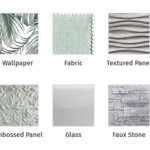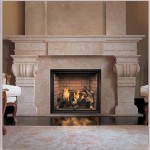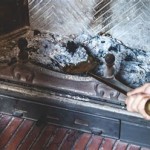Oven Cleaner for Fireplace Brick: A Comprehensive Guide
Fireplaces, while providing warmth and aesthetic appeal, often accumulate soot and creosote on their brick surfaces. This buildup not only detracts from the fireplace's appearance but can also pose a fire hazard if left unaddressed. While specialized fireplace cleaners exist, many homeowners consider using oven cleaner as a readily available and potentially effective alternative. This article provides a comprehensive examination of using oven cleaner on fireplace brick, exploring its effectiveness, potential risks, safety precautions, and alternative cleaning methods.
The primary reason oven cleaner is considered for cleaning fireplace brick stems from its powerful degreasing and cleaning properties. Oven cleaners are formulated to dissolve baked-on grease and food particles, which share some similarities with the carbon-based deposits found in fireplace soot and creosote. The active ingredients in most oven cleaners, typically alkaline substances like sodium hydroxide (lye) or potassium hydroxide, work by breaking down these complex organic compounds through a process called saponification. This process essentially converts the grease and soot into a soap-like substance that can be more easily washed away.
Despite the potential benefits, it is crucial to acknowledge the risks associated with using oven cleaner on fireplace brick. The porous nature of brick makes it susceptible to absorbing the harsh chemicals present in oven cleaner. This absorption can lead to several undesirable consequences, including discoloration, etching, and structural damage. Furthermore, the residual chemicals can emit fumes when the fireplace is in use, posing a health hazard to occupants. Therefore, a thorough understanding of the potential drawbacks is essential before attempting to clean fireplace brick with oven cleaner.
Understanding the Potential Risks
One of the most significant risks associated with using oven cleaner on fireplace brick is the potential for damage. Brick is a porous material, meaning it contains numerous tiny pores that allow liquids and gases to penetrate. When oven cleaner is applied, it can seep into these pores and react with the minerals that constitute the brick. This reaction can lead to etching, a permanent form of surface damage that leaves the brick looking dull and uneven. In severe cases, the chemicals can weaken the brick's structural integrity, causing it to crumble or crack over time. The type of brick used in the fireplace construction, its age, and its overall condition will all influence its susceptibility to damage from oven cleaner. Older, more weathered brick is generally more vulnerable than newer, more robust brick.
Discoloration is another common concern. The alkaline chemicals in oven cleaner can react with the pigments in the brick, causing it to fade or change color. This is particularly noticeable with red brick, which may turn a lighter shade or develop unsightly blotches. The degree of discoloration will depend on the concentration of the oven cleaner, the duration of exposure, and the type of pigments used in the brick's coloration. Even if the discoloration is minimal initially, it can become more pronounced over time as the brick is exposed to sunlight and other environmental factors.
Beyond the immediate damage to the brick, residual oven cleaner can pose a long-term health risk. Even after thorough rinsing, some of the chemicals may remain trapped within the brick's pores. When the fireplace is in use, the heat can cause these chemicals to vaporize, releasing harmful fumes into the air. These fumes can irritate the respiratory system, causing coughing, wheezing, and shortness of breath. Individuals with pre-existing respiratory conditions, such as asthma or COPD, are particularly vulnerable to these effects. Furthermore, prolonged exposure to these fumes may have long-term health consequences that are not immediately apparent.
Essential Safety Precautions
If the decision is made to proceed with using oven cleaner on fireplace brick, it is imperative to take all necessary safety precautions to minimize the risks involved. The first and most crucial step is to wear appropriate personal protective equipment (PPE). This includes chemical-resistant gloves, safety glasses or a face shield, and a respirator or mask to protect against inhaling fumes. The gloves should be made of a material that is impervious to alkaline chemicals, such as nitrile or neoprene. The safety glasses or face shield will protect the eyes from splashes or accidental exposure to the oven cleaner. The respirator or mask should be specifically designed to filter out chemical fumes and should be properly fitted to ensure a tight seal.
Adequate ventilation is also essential. Open all windows and doors in the room to ensure a constant flow of fresh air. Consider using a fan to circulate the air and help dissipate any fumes that may be released. If the fireplace is located in a confined space, such as a small room or basement, it may be necessary to use a portable air purifier with a HEPA filter to remove airborne particles and fumes. It is also advisable to limit the duration of exposure to the oven cleaner and to take frequent breaks to breathe fresh air.
Before applying oven cleaner to the entire fireplace, it is crucial to perform a spot test in an inconspicuous area. This will help determine how the brick will react to the chemicals and whether any discoloration or damage will occur. Choose an area that is hidden from view, such as behind the firebox or near the base of the fireplace. Apply a small amount of oven cleaner to the area and allow it to sit for the recommended time, then rinse it thoroughly and allow it to dry completely. Observe the area for any signs of discoloration, etching, or other damage. If any adverse effects are noted, discontinue use immediately and consider alternative cleaning methods.
When applying oven cleaner, use a soft brush or sponge to avoid scratching or damaging the brick surface. Apply the cleaner in a thin, even layer, being careful to avoid getting it on any surrounding surfaces, such as the mantel or flooring. Follow the manufacturer's instructions regarding the recommended dwell time, which is the amount of time the cleaner should remain on the surface before being rinsed off. Do not exceed the recommended dwell time, as this can increase the risk of damage. After the dwell time has elapsed, rinse the area thoroughly with clean water. Use a sponge or cloth to wipe away any remaining residue. Repeat the rinsing process several times to ensure that all traces of the oven cleaner have been removed.
Exploring Safer Alternatives
Given the potential risks associated with using oven cleaner on fireplace brick, it is prudent to explore safer and more gentle alternative cleaning methods. Several commercially available fireplace cleaners are specifically formulated for this purpose and are less likely to cause damage or discoloration. These cleaners typically contain milder ingredients, such as citric acid or sodium bicarbonate, which are effective at removing soot and creosote without harming the brick. Follow the manufacturer's instructions carefully when using these cleaners, and always perform a spot test before applying them to the entire fireplace.
A homemade cleaning solution consisting of vinegar and water can also be effective for removing light soot buildup. Mix equal parts of white vinegar and water in a spray bottle and spray the solution onto the brick surface. Allow it to sit for a few minutes, then scrub the area with a soft brush or sponge. Rinse thoroughly with clean water and allow the brick to dry completely. Vinegar is a mild acid that can help dissolve soot and grease without damaging the brick. However, it is important to avoid using vinegar on certain types of stone, such as marble or limestone, as it can etch the surface.
Another popular homemade cleaning solution involves using baking soda paste. Mix baking soda with a small amount of water to create a thick paste. Apply the paste to the affected areas and allow it to dry completely. Once the paste has dried, brush it off with a soft brush and rinse the area with clean water. Baking soda is a mild abrasive that can help remove stubborn stains and soot buildup. It is also non-toxic and environmentally friendly.
For particularly stubborn stains, consider using a specialized soot remover. These products are specifically designed to break down and remove soot and creosote from various surfaces, including brick. Follow the manufacturer's instructions carefully when using these products, and always perform a spot test before applying them to the entire fireplace. Some soot removers may contain harsh chemicals, so it is important to wear appropriate PPE and ensure adequate ventilation.
In addition to chemical cleaning methods, physical cleaning techniques can also be effective for removing soot and creosote. A wire brush or stiff-bristled brush can be used to scrub away loose soot and debris. Be careful not to scrub too hard, as this can damage the brick surface. A vacuum cleaner with a brush attachment can also be used to remove loose soot and dust. For more stubborn buildup, consider using a steam cleaner to loosen the soot and grease. The hot steam can penetrate the pores of the brick and help dissolve the deposits. After steam cleaning, wipe the area with a clean cloth to remove any remaining residue.
Ultimately, the best approach to cleaning fireplace brick involves a combination of prevention and regular maintenance. Schedule regular chimney inspections and cleanings to prevent the buildup of excessive soot and creosote. Burn only dry, seasoned wood to minimize the amount of smoke and soot produced. Consider using a fireplace screen to contain sparks and embers, which can contribute to soot buildup. By taking these preventative measures, it is possible to keep the fireplace brick clean and attractive without resorting to harsh chemicals or aggressive cleaning methods.

How To Clean Fireplace Bricks 9 Steps With S Wikihow

How To Clean Fireplace Bricks Cleanup Team

Fireplace Cleaning Tutorial Kippi At Home

How To Clean A Brick Fireplace The Family Handyman

How To Clean Brick Fireplace Kitchen Infinity

How To Clean Fireplace Bricks Simple Practical Beautiful

Best Way To Clean A Fireplace Stacy Risenmay

How To Clean Brick Fireplace 2024 Updated Guide

How To Clean Fireplace Bricks Cleanup Team

How To Clean A Fireplace Diy Basics








